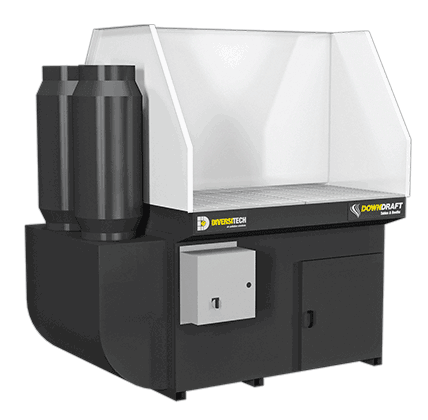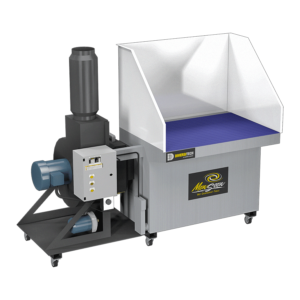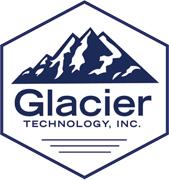 When it comes to maintaining a clean and safe work environment for processes such as metalworking operations that generate dust, fumes, or particles, downdraft tables provide an optimal solution. These tables are designed to pull contaminants away from the worker’s breathing zone, ensuring a healthier environment. However, when selecting a downdraft table, one of the critical decisions to make is whether to opt for a wet or dry system. Let’s look at the differences and benefits of each to help you determine which is right for your application.
When it comes to maintaining a clean and safe work environment for processes such as metalworking operations that generate dust, fumes, or particles, downdraft tables provide an optimal solution. These tables are designed to pull contaminants away from the worker’s breathing zone, ensuring a healthier environment. However, when selecting a downdraft table, one of the critical decisions to make is whether to opt for a wet or dry system. Let’s look at the differences and benefits of each to help you determine which is right for your application.
Dry Downdraft Tables
Using a filtration system to capture particles and contaminants from the air, dry downdraft tables often include a series of filters, such as cartridge filters or bag filters, which trap dust and particles as air passes through. Dry systems are efficient for capturing dry materials like metal shavings or sanding particles. They are also relatively low maintenance compared to wet systems, since there’s no need to replenish water or regularly dispose of sludge.

Wet Downdraft Tables
As the name implies, wet downdraft tables use water as the primary method for capturing and suppressing airborne contaminants. These tables incorporate a water curtain or bath to capture particles and direct them into a collection chamber where they settle at the bottom. Wet systems are highly effective for capturing combustible dusts, such as those generated metal processes because the water acts as a barrier against sparks and fires. Additionally, wet systems can help in controlling odors and volatile organic compounds (VOCs) in certain applications.
Which Approach is Right for You?
When deciding between wet and dry downdraft tables for your application, consider:
- Type of materials
- Processes involved
- Work environment
Dry systems are great for capturing dry particulate matter, while wet systems are the best choice for environments where there’s a risk of fire, combustible dust, or where odors and VOCs need to be controlled. Other factors to consider include maintenance requirements, initial cost, and space constraints should also be taken into account.
Glacier Technology Offers You Downdraft Table Knowledge and Experience
Both wet and dry downdraft tables offer effective solutions for maintaining a clean and safe workspace. Whether it’s metalworking or any other industrial process, choosing the right downdraft table is essential for promoting worker safety and environmental compliance. The Glacier team is here to help.
Glacier Technology partners with Diversitech to offer downdraft table technologies to manage contaminants produced in a wide range of processes. Contact us to discuss the best approach for your application.
